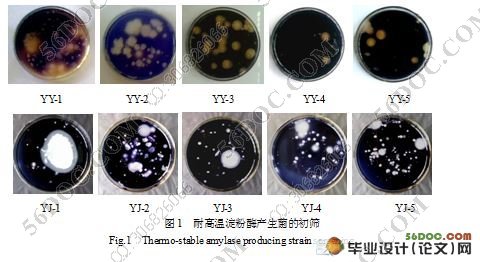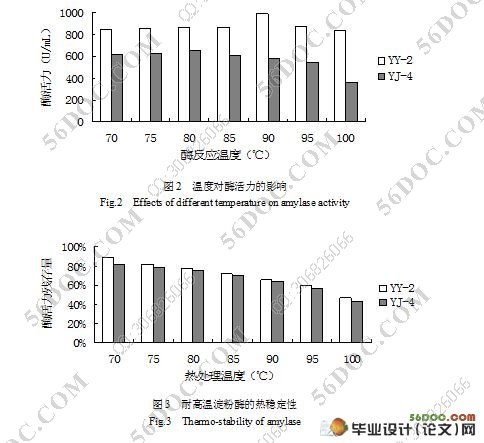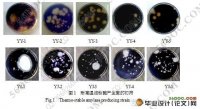耐高温淀粉酶产生菌筛选与发酵条件优化
来源:56doc.com 资料编号:5D7731 资料等级:★★★★★ %E8%B5%84%E6%96%99%E7%BC%96%E5%8F%B7%EF%BC%9A5D7731
资料以网页介绍的为准,下载后不会有水印.资料仅供学习参考之用. 密 保 惠 帮助
资料介绍
耐高温淀粉酶产生菌筛选与发酵条件优化(8300字)
摘 要:从浏阳河畔土壤中分离到两株能分泌耐高温淀粉酶的细菌YY-2和YJ-4,形态学分析表明,YY-2菌株为革兰氏阳性芽孢短杆菌,YJ-4菌株为革兰氏阳性球菌。YY-2菌株在3%麸皮,pH 7的条件下,37 ℃发酵48 h产酶效率最高,酶活力达到798 U/mL;YJ-4菌种在3% 麸皮,pH 5的条件下,40 ℃发酵48 h产酶效率最高,酶活力达到674 U/mL。酶学特性研究表明,YY-2菌产生的淀粉酶最适反应温度为90 ℃,该酶的分子量为30.8 kDa;YJ-4菌产生的淀粉酶最适反应温度为80 ℃,该酶的分子量约为61.0 kDa。
关键词:耐高温淀粉酶;筛选;发酵条件优化
Screening of Thermo-stable Amylase Producing Strains and Optimization of Fermentation Conditions
Abstract:Two strains named YY-2 which secreted thermo-stable amylase were secreted from soil near Liuyang River.Morphology analyses indicated that Strain YY-2 was bacillus bacterium while YJ-4 was coccus.Both of them were Gram-positive spore bacteria.Fermentation Conditions studies showed strain YY-2 thermo-stable amylase activity reached 798 U/mL,under condition wheat-bran 3%,pH 7.0,37 ℃ for 48 hours,while strain YJ-4 thermo-stable amylase activity reached 674 U/mL,under condition wheat-bran 3%,pH 5.0,40 ℃ for 48 hours.Enzymology characteristic studies showed that the amylase by YY-2 had a optimal temperature 90 ℃,molecular weight 30.8 kDa;While YJ-4 had a optimal temperature 80 ℃,molecular weight 60.0 kDa.
Key words: Thermo-stable amylase;Screening;Optimization of fermentation conditions


目 录
摘要 1
关键词 1
1 前言 2
1.1 耐高温淀粉酶研究的背景和意义 2
1.2 耐高温淀粉酶国内外研究现状 2
1.3 耐高温淀粉酶的优点 2
1.4 耐高温淀粉酶的应用 2
2 材料与方法 3
2.1 材料 3
2.1.1 菌种来源 3
2.1.2 实验仪器及设备 3
2.1.3 试剂及培养基 3
2.2 方法 3
2.2.1 耐高温淀粉酶产生菌的初筛 4
2.2.2 耐高温淀粉酶产生菌的复筛 4
2.2.3 DNS法检测耐高温淀粉酶活性 4
2.2.4 淀粉酶耐热性检测 5
2.2.5 菌种革兰氏染色和芽孢染色 5
2.2.6 发酵条件优化 5
2.2.7 耐高温淀粉酶聚丙烯酰胺凝胶电泳 6
3 结果与分析 6
3.1 菌种筛选 6
3.1.1 初筛时能产生耐高温淀粉酶的细菌 6
3.1.2 DNS法检测耐高温淀粉酶活性 7
3.2 菌种YY-2 和YJ-4产生的淀粉酶耐热性检测 7
3.3 对菌种YY-2和YJ-4形态分析 8
3.4 耐高温淀粉酶发酵条件的优化 9
3.5 耐高温淀粉酶聚丙烯酰胺凝胶电泳 11
4 结论 13
参考文献 13
致谢 15
|





